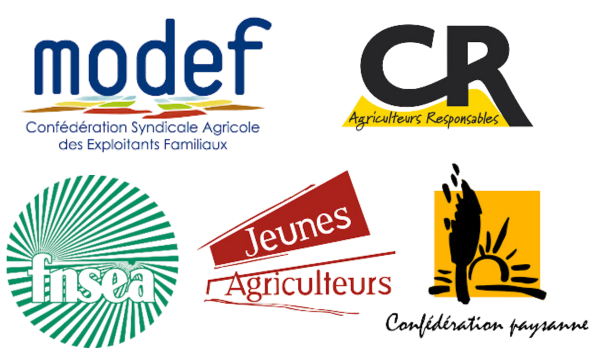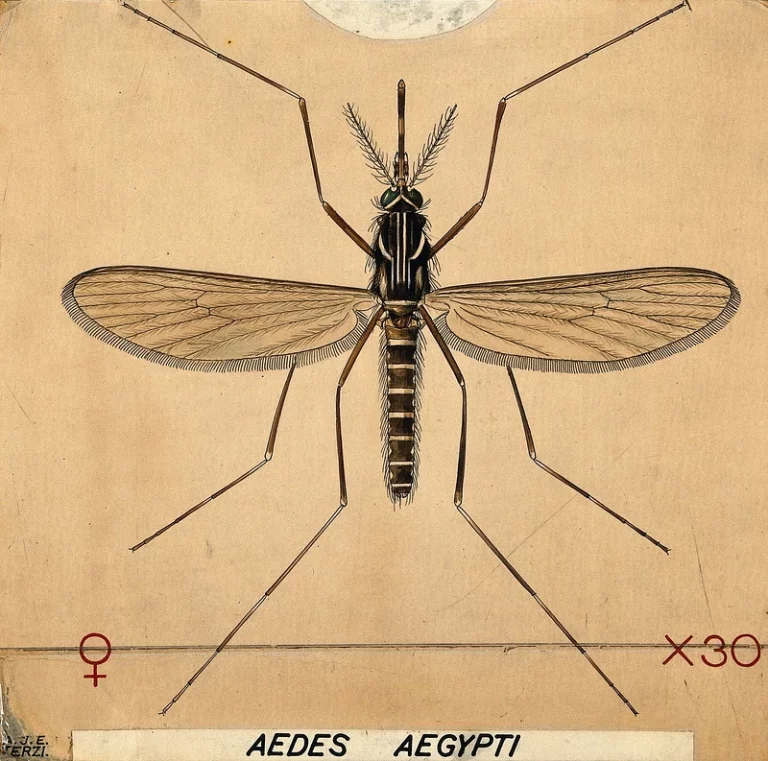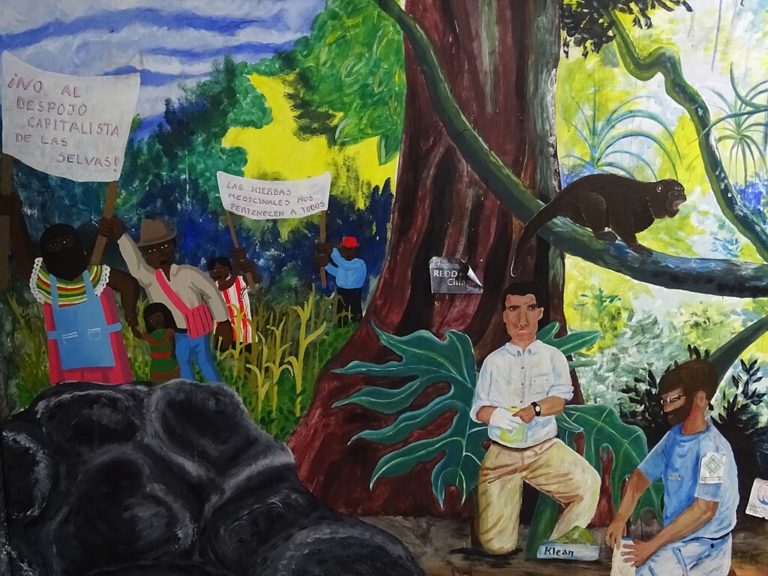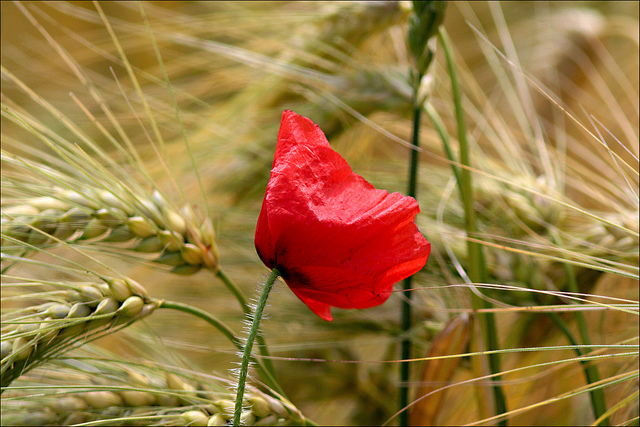Actualités
Is Renan wheat genetically modified ?

The judgment of the Court of Justice of the European Union of July 25, 2018 on the GMO character of plants resulting from mutagenesis did not please everyone. So as to justify their opposition to this judgment, some commentators claim that it makes the most used variety of wheat in organic farming, wheat Renan, a GMO. We went back in time, not without difficulty since not all the informations are made public, to understand the various technics that allowed the development of this variety. The conclusion is clear: the variety Renan is not a GMO in the sense of European and international regulations. This does not preclude questioning some “improvement” processes implemented to obtain it.
The judgment of the Court of Justice of the European Union of July 25, 2018 [1] only confirms what the European directive of 2001 already said: plants derived from mutagenesis are all GMOs and those that have conventionally been used in a number of applications and have a long safety record are not regulated at the european level. On the other hand, this judgment adds that the Member States must submit those which were obtained by new techniques of mutagenesis using genetic engineering to the same regulation as the transgenic plants. What about Renan Wheat, frequently challenged, including before this judgment [2]?
Renan wheat is a variety of common wheat (Triticum aestivum) [3] widely used in organic farming: it represented up to 30% of organic common wheat in France in 2007 [4]. Why such a popularity in organic farming? Simply because it is a variety resistant to “various diseases or pests, including several rusts, nematodes, eyespot and powdery mildew” [5] [6], but especially, according to the Institut technique de l’Agriculture Biologique (Itab), questioned by Inf’OGM, because “the commercial offer in varieties of rustic common wheat or selected for organic agriculture is very reduced and that the Renan is a good compromise between yield and quality in organic culture”.
A breeding process needing different technical procedures
The variety was developed by INRA and included in the catalog of varieties in 1989 by Agri-Obtentions, a subsidiary of INRA specialized in the creation and promotion of varietal innovations. It is not therefore an old variety.
This variety has resistance to rust and eyespot from a wild grass, Aegilops ventricosa, related to wheat but with which wheat is not sexually compatible. Therefore, the crossing, indeed possible, requires several steps (see box below).
A crossing in various steps
Researchers have noted that Aegilops ventricosa, a tetraploid genome grass (ie, with two sets of 2n chromosomes, called DDMM), could cross with Triticum persicum, also a tetraploid wheat (but of AABB composition) close to durum wheat. One of the questions was: was this crossbreeding done “naturally” (by multiplication and/or natural recombination [7]), or did a technique such as “embryo rescue” (in vitro) [8] used?
Reviewing the scientific literature [9] and discussions with many INRA researchers [10] have allowed us to eliminate with absolute certainty the hypothesis of an embryo rescue. “At the time, it was not even an option!” tells us Nicole Maïa, former researcher at INRA and one of the initial breeders of the ancestors of Renan’s wheat. “The classical method used was as follows: – inter-specific hybridization between common wheat and Aegilops ventricosa which has a common genome with common wheat; – restoring fertility by doubling the chromosome number – backcrossing with common wheat to return to a common wheat with 42 chromosomes. This scheme is a common phenomenon in nature! ”. In addition, Marc Simonet, a researcher at INRA, points out that hybridizations between different species “sometimes occur spontaneously in nature”. He also points out, in the same article published in 1957, that Aegilops “hybridizes easily to tetraploid Triticum, and that hybridization occurs even naturally in Algeria” [11]. This would tend to confirm that it was not necessary to resort to any embryo rescue at this stage.
The following is more clear: the plant resulting from this cross, which accumulates chromosomes AB and DM, is sterile. Indeed, DM chromosomes do not match with AB chromosomes [12]. To make this new plant fertile, they “doubled” its chromosomes to obtain a plant with four sets of 2n chromosomes (AABBDDMM) [13]. To this end, its floral parts (which produce the gametes) have been bathed in a solution of colchicine, an alkaloid [14] that blocks cell division during mitosis [15]. This practice has a barbaric name: polyploidy induction.
Thus, the gametes (ABDM) produced by this wheat can naturally fertilize those of wheat (with an hexaploid genome, that is to say with three sets of 2n chromosomes, AABBDD, thus giving gametes ABD) and the descendants have progressively lost supernumerary M chromosomes that have not found to pair (see diagramme). André Gallais, emeritus professor of genetics and plant breeding at AgroParisTech, explains: “In the specific case of the VPM line, one of the ancestors of the Renan variety, recombination eventually occurred naturally” [16] [17]. This observation is also made by Marc Simonet, who emphasizes that “hybridization [is] feasible between species having the same number of chromosome or distinct numbers, aneuploid [18] or polyploid”. He adds: “Many hybrids operate freely in nature” [19].
The wheat Triticum persicum thus played the role of “bridge” between the two species: crossed with Aegilops, it recovered the characters of resistance, then crossed with T. aestivum, it passed them to common wheat (see diagram).
The first variety resulting from this process (inscribed in 1976) was called Roazon. Renan is one of its descendants. More than 40% of the other common wheat varieties inscribed between 1996 and 2000 are also derived from it (such as Ralf (1996), Virtuose (1998), Cardos (1999) or Mitchell (1999)). According to a researcher from INRA, « the Renan variety, resulting from a polyploïdization operation [see below] that took place in the 1970s, has since, like its parents, been multiplied and selected in the fields during almost 50 generations. There was therefore a long-term “stabilization” / adaptation by human and natural selection« .
Polyploidy is a process that can occur naturally in plants
Doubling the number of chromosomes is a step in the plant reproductive process that can occur naturally. It is a rare phenomenon, but regularly observed [20] and quite natural. It is even thought that all flowering plants have experienced at least one polyploidy event during their evolution, linked to various stresses with often a return to diploidy, and there are also several levels of ploidy for the same species [21]. This phenomenon of polyploidy can also, as we have seen, be induced, in particular by immersing the floral organs of the plant in colchicine. But unlike mutagenesis, cellular fusions, transgenesis and new genetic engineering techniques, polyploid induction, in the current state of knowledge, is not known to substantially modify the chromosomes thus multiplied. This is why the European Directive 2001/18, which regulates the release of GMOs, this technique is not considered to result in genetic modification. Annex IA Part 2 of that directive states that “are not considered to result in genetic modification (…): (1) in vitro fertilisation; 2) natural processes such as conjugation, transduction, transformation, and 3) polyploidy induction”.
That is why Renan wheat is, from the legal point of view, not a GMO. In the current state of what INRA made public, it can therefore be grown in organic farming provided that the seeds used have been multiplied at least one season in organic; still legally speaking and provided that the colchicine used during polyploidy induction is not synthetic, organic “breeding” can use the same methods described above to obtain such varieties [22].
Is Renan wheat a GMO with respect to the Cartagena Protocol definition?
For the Cartagena Protocol, a “living modified organism” (LMO) means any living organism that possesses a novel combination of genetic material obtained through the use of modern biotechnology. But what is modern biotechnology for this Protocol?
Modern Biotechnology “means the application of
a) in vitro techniques to nucleic acids, including the recombination of deoxyribonucleic acid (DNA) and the direct introduction of nucleic acids into cells or organelles, or
b) cell fusion of organisms that do not belong to the same taxonomic family,
that overcome the natural barriers of reproductive physiology or recombination and which are not techniques used for classical reproduction and selection” [23].
The technique for obtaining Renan wheat does not meet this definition of modern biotechnology. As we have seen, the “natural barriers of reproductive physiology” were not overcome, since the parents used can here cross each other naturally (see note 12 above). Moreover, doubling the number of chromosomes by bathing the floral organs in colchicine is a technique that has been widely developed since the 1950s. It is therefore one of the “techniques used for classical reproduction and selection”. For these two reasons, Renan wheat is therefore not an LMO concerning the Cartagena Protocol.
So, is there nothing out there to discuss? No, of course!
Proponents of the precautionary principle and those who take into account the global context and issues related to the tremendous acceleration of biological processes up to levels that change their nature [24] rightly denounce the increasing number of techniques that necessarily lead to side effects. But they must also question these non-natural techniques of chemical polyploidy induction or any other disturbance of the genome. Because it is from X-rays or other mutagenic agents (temperature shocks, cultural practices, chemical treatments [25]…), any action that genetically modifies a plant in a non-natural way conceals, a priori, risks (for example, expression of characters in more or less, weakening of the plant toward the environment – pests, diseases, natural conditions…).
Many varieties have been developed since the 1950s by polyploidy induction. Should we ban all of them from organic farming, at the risk of having nothing to cultivate?
The stakeholders of organic farming are considering the types of seeds they agree. Their international organization, IFOAM, addressed the issue at its 2017 Congress in Delhi, India. For the time being, they refuse in organic selection any techniques of synthetic chemical mutagenesis or of irradiation [26]. Moreover, the new organic regulation 2018/848 stipulates in its Annex II, art. 1.8.4 that “For the production of organic varieties suitable for organic production, the organic breeding activities shall be conducted under organic conditions” which exclude any use of synthetic chemicals (such as synthetic colchicine [27]) and any irradiation (like that used since the 1950s for mutagenesis).
There is still no obligation to inform the public about the processes of breeding, selection and multiplication used, and organic varieties (selected in an organic way) do not yet benefit from the implementing decrees (delegated acts) authorizing their legal existence. Up to now, in the absence of this obligation of information, the organics can not know if the varieties they grow come from techniques which they accept or which they reject. Many people are turning to the few conventional “rustic” or “low-input” varieties, of which Renan was a precursor, while others are collectively organizing themselves to select their own peasant wheat with the help of a few researchers who have the courage to think outside the box. Thierry Mercier, former president of Itab [28], recalls that currently, there is “an offer that is expanding with five pure lineage varieties considered as adapted to organic standards (including three since the end of 2018) and a series of interesting Austrian varieties”. In addition, several hundred populations varieties of bread wheat are selected by farmers with participatory approaches [29] within the Réseau Semences Paysannes. The first results are already encouraging [30]. In organic farming conditions, these peasant varieties have very interesting behavior, especially in stressing conditions, in terms of grain yield, biomass production (high straw) and nutritional and organoleptic qualities. It is therefore to be expected that, in the long term, obtaining new organic varieties, selected under organic conditions [31], will make it possible to develop an alternative to plants derived from new mutagenesis techniques.
Finally, let us recall with Valentin Beauval (agricultural farmer) and Véronique Chable (INRA researcher), that the resilience of plots to various hazards (climatic and other) is due to their intrinsic diversity. It is necessary to go beyond the banishment of varieties selected for conventional “chemical” agriculture, even if it has low inputs. In the regulation, organic seed requires a single generation of organic cultivation of a variety selected and/or multiplied in the laboratory according to processes that often question the basic principles of organic farming as defined by Ifoam (use of chemical products, especially for in vitro cultures and / or polyploidy induction, modern biotechnologies …). A global management of the plot cultivated by association of species strengthens the ecosystems, and all the more so when the cultivated varieties are diversified and evolutionary populations.
[1] https://www.infogm.org/6609-europe-nouveaux-ogm-sont-ogm-comme-autres and PR release or Judgment of the court
[2] For instance, see Gallais, A., « La principale variété de blé « bio » serait-elle génétiquement modifiée ? », dossier “Quelques idées reçues sur le bio”, Sciences et pseudo-sciences n° 314, october 2015
[3] Common wheat, or bread wheat is used for flour (bread, pastries…), durum wheat, once crushed, to make pasta, semolina…
[4] This percentage is however decreasing (only 18% in 2012… and 13% in 2017) due to the development of other resistant varieties.
[5] Arvalis, « Renan, Blé tendre d’hiver»
[6] Renan, « Référentiel blé AB », Results of ITAB network
[7] The directive 2001/18 defines a GMO as “an organism, with the exception of human beings, in which the genetic material has been altered in a way that does not occur naturally by mating and/or natural recombination”
[8] This technique allows « the development of many interspecific and intergeneric food and ornamental plant crop hybrids. This technique nurtures the immature or weak embryo, thus allowing it the chance to survive»
[9] Mainly two seminal articles so as to track the origin of common wheats resistant to eyespot: Maïa N., 1967. « Obtention de blés tendres résistants au piétin verse par croisements interspécifiques blés x Aegilops ». C.R. Acad. Agric. Fr., 53, 149-154, ; and « Évolution de la variabilité génétique chez le blé », Gérard Doussinault, Marie-Thérèse Pavoine, Bénédicte Jaudeau and Joseph Jahier, Dossiers de l’environnement de l’INRA, n°21, 2001
[10] including with one of the coauthors of the Dossiers de l’environnement de l’INRA, n°21, 2001 article
[11] See p. 402 of Simonet M., 1957. Hybrides interspécifiques et intergénériques, Ann. Amélior. Plantes, 4, 395-411
[12] in other words, they do not come into pairs
[13] “Évolution de la variabilité génétique chez le blé”, Doussinault G. et al., already quoted article
[14] « Alkaloids ar a class of naturally occurring organic compounds […] produced by a large variety of organisms[…].Alkalooids have a wide range of pharmacological activities […] psychotropic […] and stimulant activities […] and have been used in entheogenic rituals or as recreational drugs. Alkaloids can be toxic too » (from Wikipedia)
[15] Colchicine can be either synthetic or natural (derived from crocus). The nature of the colchicine used is also not detailed in the articles. Nicole Maïa tells us however that the synthesis of this molecule dates from the 50s, with a lot of complications at the beginning: it is therefore very likely that it was a natural colchicine. See : “Total Syntheses of Colchicine in Comparison : A Journey Through 50 Years of Synthetic Organic Chemistry”, Article Literature Review in Angewandte Chemie International Edition, 43(25):3230-56 · June 2004.
[16] Gallais, A., « La principale variété de blé « bio » serait-elle génétiquement modifiée ? », Op. Cit.
[17] A. Gallais is quoted in another article: “Fortunately for our organic friends, as far as the ancestor of Renan is concerned, it has been a coincidence that after many attempts, good chromosomal recombination eventually occurred naturally. A chromosome block containing the yellow, brown, black and nematode rust resistance genes was integrated into one chromosome of Triticum aestivum, and another chromosome block, containing Pch1, was integrated on another chromosome”, extracted from the pro-GMO [website→agriculture-environnement.fr]
[18] Aneuploidy is the presence of an abnormal number of chromosomes in a cell. This genetic anomaly is a mutation that can be viable or not (from Wikipedia french and english definition).
[19] See p. 395 of Simonet M., 1957. Hybrides interspécifiques et intergénériques, Op. cit.
[20] See p. 399 of Simonet M., 1957. Hybrides interspécifiques et intergénériques, Op. cit.
[21] A. Tayalé, C. Parisod, « Natural Pathways to Polyploidy in Plants and Consequences for Genome Reorganization », Cytogenet Genome Res DOI : 10.1159/000351318, June 8, 2013
[22] The new European organic regulation (REGULATION (EU) 2018/848) distinguishes:
![]() organic cultivation of organic or conventional varieties, provided that the last generation of seed multiplication is organic;
organic cultivation of organic or conventional varieties, provided that the last generation of seed multiplication is organic;
![]() obtaining and selecting “organic varieties” that must be carried out at all stages and in all their history in accordance with the organic regulation, ie without synthetic chemicals or irradiation
obtaining and selecting “organic varieties” that must be carried out at all stages and in all their history in accordance with the organic regulation, ie without synthetic chemicals or irradiation
[25] See p. 399 of Simonet M., 1957. Hybrides interspécifiques et intergénériques, Op. cit.
[26] For an overview of these licensed techniques in AB, see: IFOAM – Organics International position paper, Compatibility of Breeding Techniques in Organic Systems, Dossier Plant Breeding Techniques An assessment for organic farming, FiBl
[27] On the other hand, IFOAM has classified polyploidy induction as a technique compatible with AB if the colchicine used is of natural origin.
[28] He is also administrator of Inf’OGM
[29] Rivière P. et al. « Mise en place d’une méthodologie de sélection participative sur le blé tendre en France », Innovations Agronomiques 32 (2013), 427-441. et















